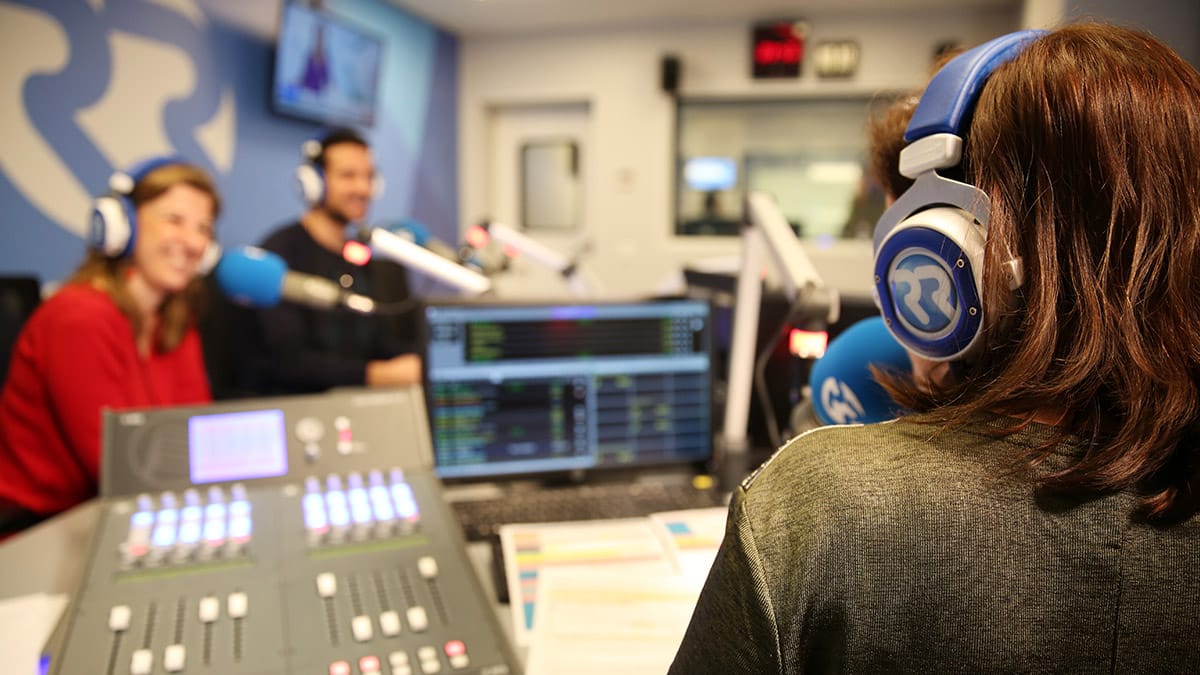LISBON — Rádio Renascença is a private, commercial radio station based in Lisbon, Portugal, owned by various organizations within the Portuguese Catholic Church.
The station has a colorful history. It was founded in 1934 by Monsignor Lopes da Cruz, a Catholic clergyman, and started broadcasting in 1937 as a full-service radio station aimed at a broader audience — not just Catholics. It also didn’t focus on religious programming.
The station holds a special place in the country’s historical timeline. Just after midnight, on April 25, 1974, the station broadcast a banned song — “Grandola, Vila Morena.” It was a signal to the revolutionary Armed Forces Movement (MFA) to commence operations against Portugal’s military regime in what became known as the Carnation Revolution. This was the spark that led to the transition to democracy in Portugal.
Reaching out
When Rádio Renascença started broadcasting, it did so with a private license. In the early days of radio — from the 1920s — private radio stations dominated broadcasting in the United States and Canada (Brazil followed in the 1930s). However, in Europe and the rest of world, the public broadcasting model prevailed. So, Rádio Renascença is one of the pioneers of private broadcasting in the Old World.
Monsignor Lopes da Cruz’s mission for the station continues to this day. “We are a Catholic Radio open to everyone. If we just talked to deeply-motivated Catholics, we’d confine our potential reach,” says José Loureiro, Rádio Renascença’s innovation and technical unit assistant manager. “Instead, we broadcast news, sports and entertainment content, talking to everyone and bringing them a positive and trustable message.”
Together with sister stations RFM and MegaHits, Rádio Renascença is part of Grupo Renascença Multimédia (Renascença Multimedia Group), which reaches more than 4.5 million people (about 63% of radio listeners in Portugal).
Each RMG station targets a specific audience group. Renascença is a full-service, national radio station focused on the 35–54 age group. RFM (“Renascença FM”) debuted in 1986, and broadcasts adult contemporary music targeting the 25–34 age group. MegaHits is a contemporary hits station and targets the 15–24 age group.
“We don’t censor artists or themes, and by just listening to everyday broadcasts, no one would say they had tuned in to a Church-owned station,” Loureiro adds, “but parents of MegaHits listeners can trust our content — there are lines we don’t cross.”
The AoIP transition
In 2016, RMG moved the production infrastructures for the three stations to a new facility, purpose-built from scratch. In the new building, everything is designed for audio over IP. To be flexible in their choice of equipment, RMG chose the Dante protocol.
When it designed the new facility in 2015, it chose AEQ as a main partner, therefore much of the equipment comes from the Spain-based company. As the years progressed, and new requirements arose, RMG has gradually integrated Dante gear from other manufacturers, such as RDL interfaces, Behringer consoles and Dante Virtual Soundcards. “This is one of the big advantages of Dante,” comments Loureiro.
The three stations feature the same equipment and technology and take advantage of several operation synergies. A single newsroom supports all the stations. There is a common technology infrastructure and web operation development and the same RCS Zetta automation system with a single, shared database that allows fast, easy content exchange between the stations.
The new RMG facility includes 11 studios and four phone booths. Although each station has exclusive use of two studios, the AoIP design allows an easy “swap” across stations if needed, as well as easy allocation of non-exclusive studios and resources.
A creative medium
RMG equipped all the studios with robotized cameras and multiCAM controllers, with Dante used for audio connections. “The idea is to produce great audiovisual content without the need for video specialist staff,” Loureiro explains. The radio stations don’t air a synchronous visual radio channel. Instead, the audiovisual content is an extension of their radio production, as a way of being everywhere, reaching their audience wherever people are. So, the presenters publish their audiovisual content on social media and RMG’s own podcast platform.
“We don’t compete with Spotify or similar entities, but we felt the need to aggregate Portuguese speaking content from any station in a single place,” says Loureiro. RMG launched a Portuguese podcast platform that is open to all the Portuguese content producers and media groups.
RMG considers technology a creative medium. As an example, almost 10 years ago, it sourced a 3G codec (“probably the first one in Portugal,” according to Loureiro) and used it to produce something previously impossible: Instead of talking to commuters in their cars, the station talked directly with commuters inside their own cars. Every morning, RFM’s radio talent went to an intersection, knocked on the window of a random car and asked if they could jump in.
They then “chewed the fat” with the driver and passengers live on-air using an AETA Audio Systems 3G codec. When the conversation was over, the presenters jumped out of the car at a traffic light, randomly knocked at another car’s window and repeated the process until the show was over.
In a different version of the idea, the presenters drove a minivan with nine people, bringing them to their respective offices, again talking about everything they liked. Recently, when urban cycle paths became a hot topic in Portugal, Renascença produced shows where on-air talent presented their live shows while riding their bicycles across town.
“I believe technology is a key pillar of creativity, and we strive to create new formats as soon as they become viable through a new technology we can source. But I also have to say, being so mobile production-oriented helped us consistently in managing the many issues COVID-19 threw our way,” concludes Loureiro.

